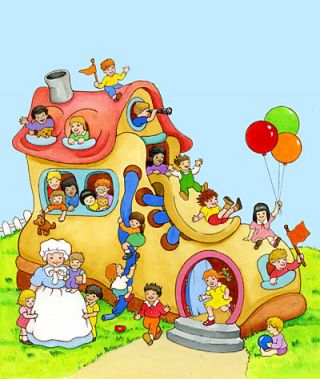
Career
New Ammo in the Mommy Wars
Folks giving advice about when to have kids, & how many, turn to social science
Posted June 18, 2013

Back in the 1980s when I was having my babies (I've had two, both girls, born in 1980 and 1984), the Mommy Wars were in full flower. It was pre-blogging days—hell, it was pre-internet days, except for the lucky few of us who had access to academic email accounts—so the battles occurred in newspaper columns and around kitchen tables. Mothers who stayed at home were criticized by working mothers as being dull and useless, and internalized these feelings when asked at cocktail parties, "What do you do?" Mothers who worked were slammed by stay-at-home mothers as being heartless narcissists who churned out babies only to have them raised by somebody else. A woman in either camp felt compelled to defend her own decision, and to demonize women whose decisions were different.
Why haven't we managed to put such acrimony behind us? I don't know—but it does seem that, at least based on the evidence of two new articles published online last week, the rules of engagement have changed a bit. Now the war is being waged not just with emotion, but with social science research.
The first piece, on The Atlantic web site, was by Lauren Sandler, the author of the new book One and Only: The Freedom of Having an Only Child, who advises that if you're a woman who wants to be both a successful writer and a mother, you can do it, as long as you have only one child. "It was only when I was working on a book investigating what it means to have, and to be, an only child that I realized how many of the writers I revere had only children themselves," she wrote. She quoted Alice Walker as saying that the benefit was that with one child "you can move," while "with more than that you're a sitting duck." Among Sandler's beloved women authors who had just one child were Susan Sontag, Joan Didion, Mary McCarthy, Elizabeth Hardwick, Margaret Atwood, and Ellen Willis.
The blowback came from wildly successful writers who had made different decisions, writers like Jane Smiley (3 kids, 2 stepkids) and Zadie Smith (2 kids), who wrote comments to the Atlantic blog post criticizing her conclusions. Sandler was ostensibly making her one-child recommendation based on some sort of research—she did, after all, write an entire book on the subject, of which this essay was just one small bit of click-bait—but whatever surveys she was relying on started to look awfully questionable when the multi-offspringed writers came out of the woodwork.
As Rebecca Mead (1 kid, 3 stepkids) put it on The New Yorker web site,
Sometimes it seems it will never end, this debate over what women who are also mothers can and can’t do. It’s the op-ed topic that keeps on giving. Most of the time, however, when issues of work-life balance—that deathless coinage—are under discussion, the question is whether motherhood renders a woman less effective in fulfilling her non-maternal responsibilities.
Mead's take on the whole thing is that it's just a new iteration of the tired old Mommy Wars, with an updated taunt: "my family structure is more freeing than your family structure."
In the second article, published in Slate, Mary Ann Mason, a law professor at Berkeley and the co-author of Do Babies Matter?, declared that for women hoping to succeed in academia, having kids at all is a bad idea. "The early years are the most decisive in determining who wins and who loses," she wrote. Women who have babies while doing grad school or postdoc work are more than twice as likely as childless women "to turn away from an academic research career."
None of this would make a difference—not the career advantage of one child over a houseful of them, not the impossibility of climbing the academic ladder when you're also a mother -- if we as a culture believed in easing the childcare burden on women when their kids are small. Because here's the thing: young mothers in academia are twice as likely to leave their research careers not only in comparison to childless women, but in comparison to men with kids—that is, men who became fathers during grad school or postdoctoral work, the very period when childbearing was so damaging to a woman's career. And the inequity continues all the way up the tenure track. As Mason writes:
The women who do make it often do so alone. Women professors have higher divorce rates, lower marriage rates, and fewer children than male professors. Among tenured faculty, 70 percent of men are married with children compared with 44 percent of women.
Now that is the aspect of the bad old days, even more than the persistence of the Mommy Wars, that I really thought we'd have outgrown by 2013.

